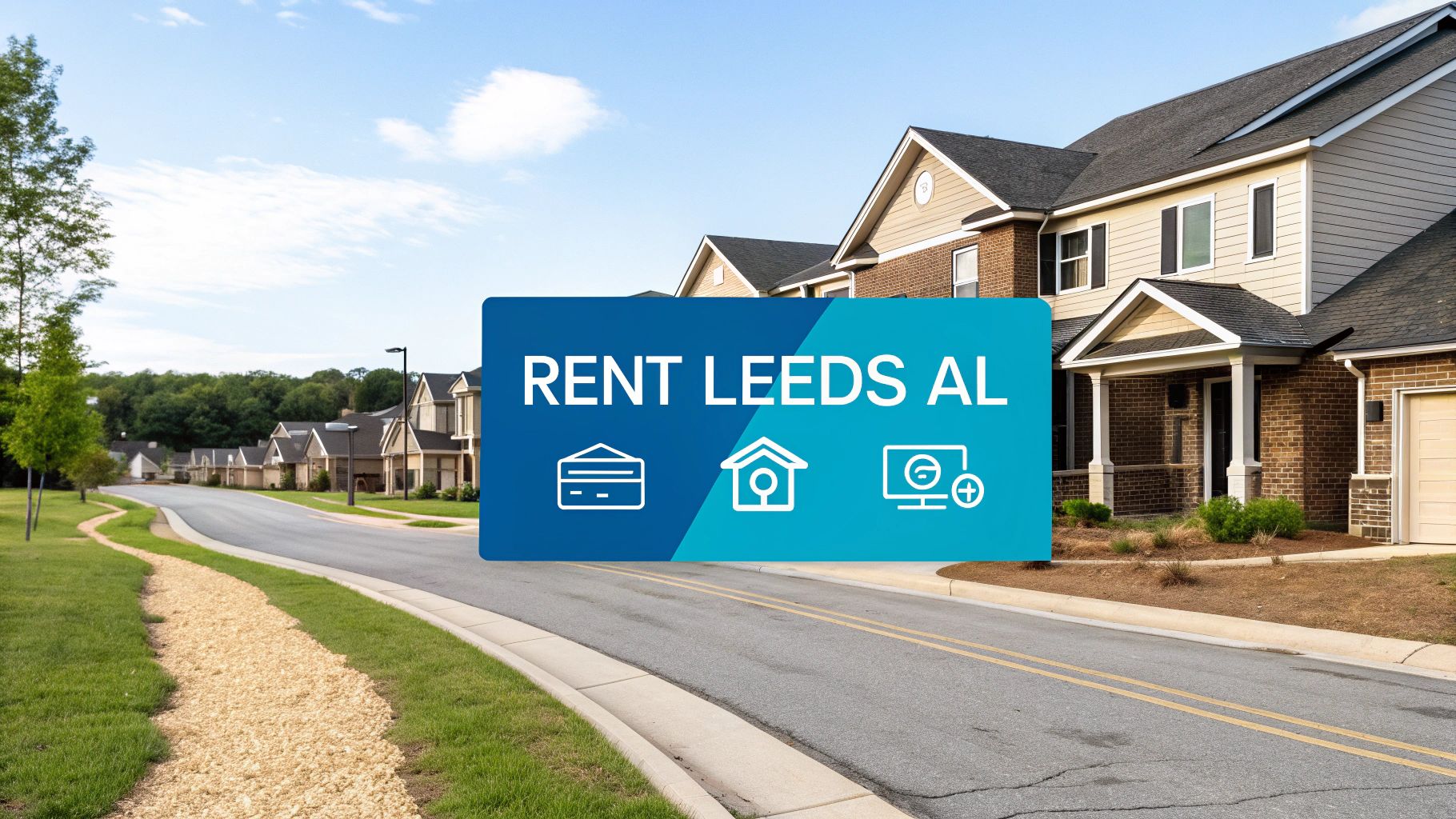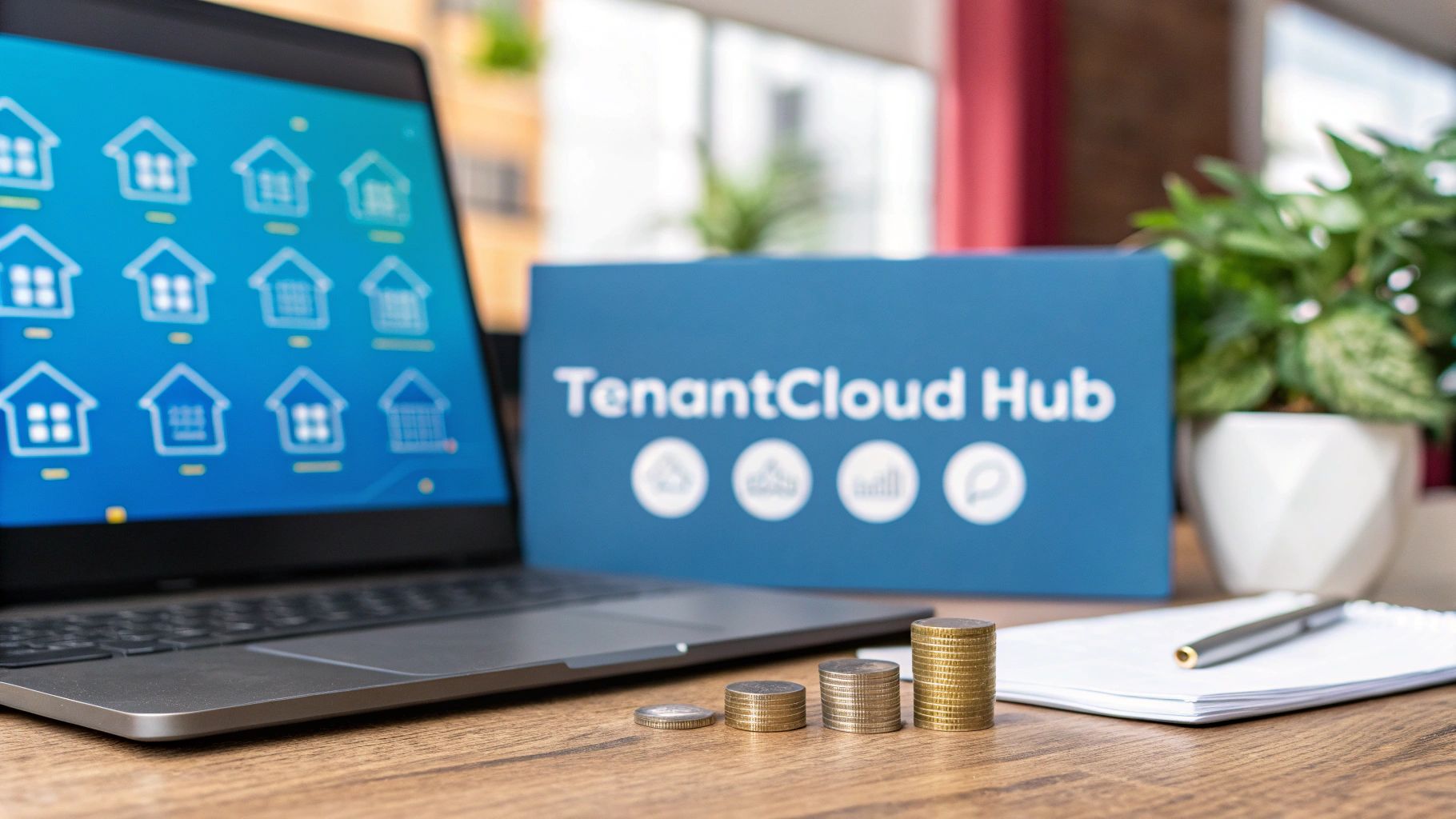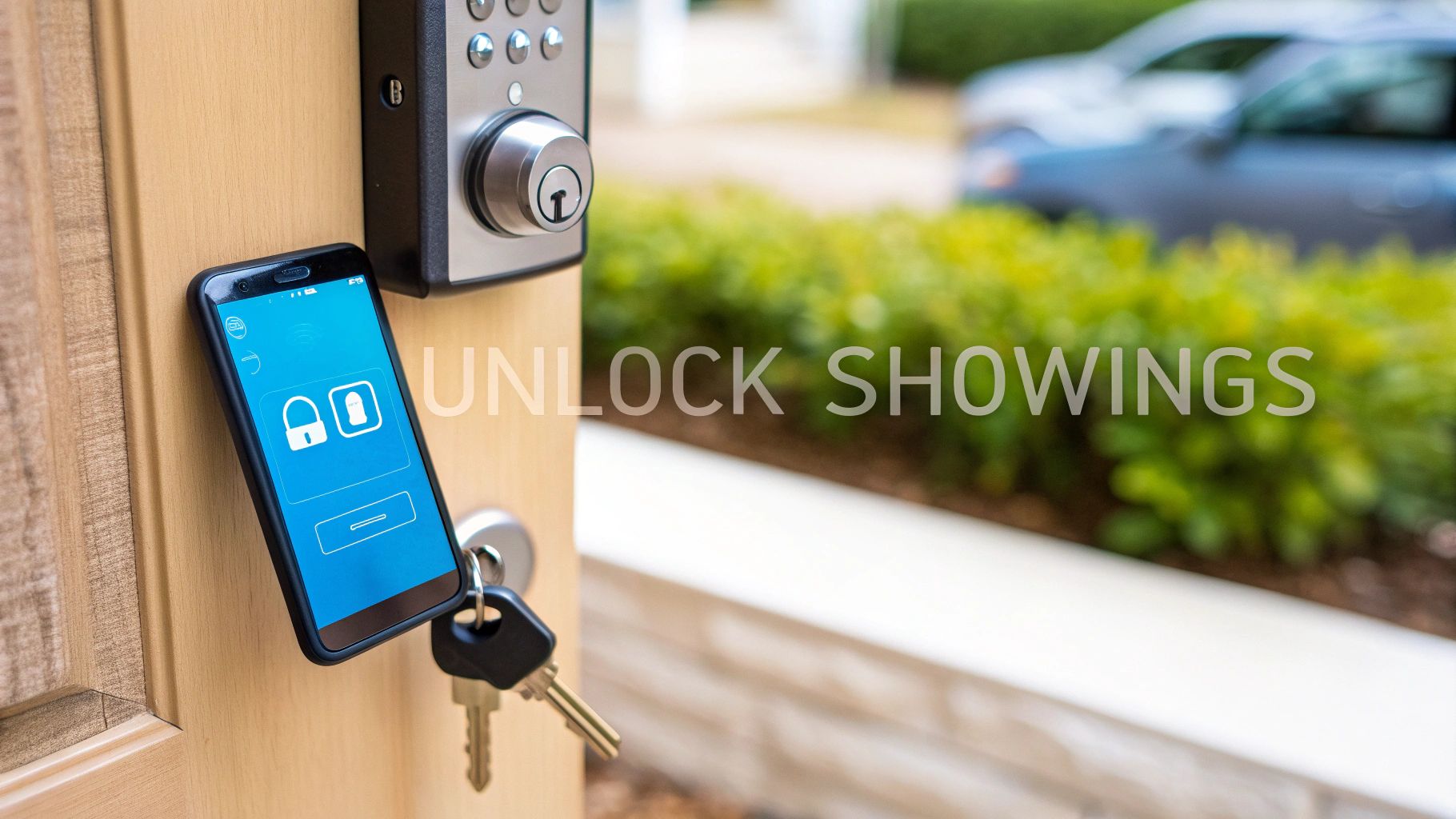The biggest mistake growing property management companies make is treating a portfolio of 100 units the same way they treated a portfolio of 10. It’s not a side hustle anymore; it's an enterprise. To succeed at scale, you have to run it like a streamlined, data-driven business from day one.
That means getting strategic about everything—optimizing cost per door, budgeting for capital expenditures across hundreds of units, and truly understanding your operational bottlenecks. Nailing this foundation is what separates a profitable, scalable portfolio from a high-overhead, low-margin headache.
Building Your Scalable Operations Foundation
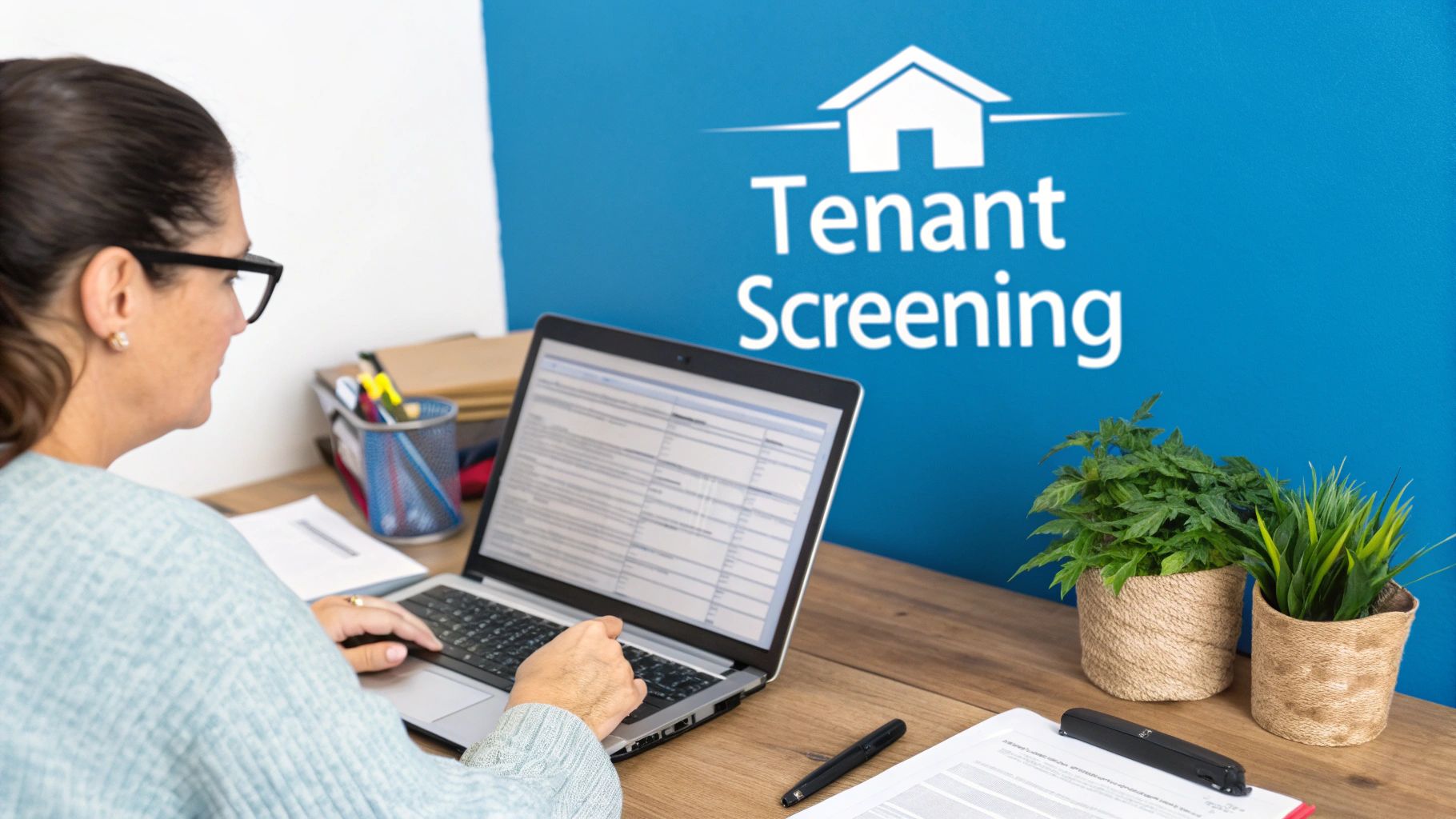
Switching from a small landlord mindset to an enterprise operator mindset is a huge leap. Your properties aren't just assets; they are units in a complex operational system. Grasping this is the absolute core of successful property management at scale. The first thing you need to do, before rolling out new processes, is to build a solid financial and operational framework that can handle growth.
This is especially critical because the challenges of managing 1,000+ units are fundamentally different. According to the 2024 State of the Property Management Industry Report, operational efficiency and growth are the top two goals for PMCs. When you’re in charge of a large, distributed portfolio, the buck stops with you for everything from portfolio-wide financial planning to managing remote leasing operations.
Setting a Data-Driven Rent Price
Pricing hundreds or thousands of units shouldn't be a guessing game. The best practice for enterprise-level operations is running a continuous comparative market analysis (CMA) using real-time data platforms. This means you’re constantly analyzing hyper-local comps to optimize rental income across the portfolio.
- Analyze market data. Use property management software with built-in analytics to track rental rates for similar unit types in your submarkets.
- Compare unit attributes at scale. Pay close attention to amenities and condition. A portfolio with 200 recently renovated units can command a higher average rent than one with dated features. This data must inform your CapEx strategy.
- Adjust pricing dynamically. Set rents competitively based on real-time supply and demand. If your portfolio offers premium amenities, price it at the top of the market. If you need to reduce vacancy, adjust slightly to accelerate leasing velocity. Speed-to-lease is paramount.
Creating a Comprehensive Portfolio Budget
One of the most common traps for growing PMCs is underestimating the true operational cost per door. Your budget needs to go way beyond just PITI (principal, interest, taxes, and insurance).
A rock-solid portfolio budget is your financial safeguard. It must account for fixed costs like debt service and taxes, but also for the variables you know are coming, like vacancy loss and major capital expenditures. This is how you maintain profitability, even when market conditions shift.
To professionalize your operation, think about maintenance proactively. Using a detailed commercial-grade maintenance checklist across all properties helps you forecast costs and maintain asset value, a huge part of your financial planning. When you build a budget that includes reserves for both maintenance and vacancy loss, you're protecting your cash flow and setting your portfolio up for sustainable, profitable growth.
Understanding Your Core Operational Responsibilities
Managing a large portfolio comes with a host of duties beyond just collecting rent. From legal compliance across multiple jurisdictions to standardizing the tenant experience, you're managing a complex system. It's vital to have a clear picture of these responsibilities as you scale.
Here's a quick checklist of the core operational functions you'll be managing:
| Essential Enterprise PM Responsibilities Checklist |
| :--- | :--- |
| Responsibility Area | Key Tasks |
| Financial & Legal | Set market-driven rents, manage security deposit compliance across markets, oversee portfolio-level budgets, and ensure compliance with all fair housing laws. |
| Leasing Operations | Develop multi-channel marketing strategies, implement a standardized and automated applicant screening process, and execute legally-vetted lease agreements at scale. |
| Portfolio Maintenance | Conduct regular property inspections, manage a centralized work order system for repairs, and oversee preventative maintenance programs to protect asset value. |
| Tenant Lifecycle Mgmt. | Standardize tenant onboarding, manage centralized communications, enforce lease terms consistently, and streamline the move-out and turnover process to reduce DOM. |
This table isn't exhaustive, but it covers the big-ticket items. Having a scalable system in place for each of these areas is what separates the enterprise leaders from the rest and ultimately determines your success as a large-scale operator.
How to Optimize Lead-to-Lease Velocity

Let's be honest: converting a qualified lead into a signed lease is the most critical part of running a profitable portfolio. It's the difference between hitting revenue targets and explaining high vacancy loss to investors.
A reliable tenant pays on time and renews. A bad lead funnel? That means high marketing spend, legal headaches, and millions in lost potential income. It all boils down to creating a robust, automated process that attracts high-quality prospects and gives you the tools to convert them quickly.
It all starts with your marketing. Think of your listings as your portfolio's first impression, and you only get one. High-quality photos and 3D tours are absolutely non-negotiable.
When you write descriptions, don't just list features—sell the lifestyle. Instead of "two bedrooms," try "two spacious bedrooms with large closets, perfect for a home office setup." This needs to be templated and consistent across all listings.
Crafting a Compelling, Scalable Listing Strategy
To cut through the noise, your listings need to be optimized for conversion. You have to think like a performance marketer and highlight what makes your properties the best choice in their submarket.
- Get Specific: Don't be vague. Mention the brand names of new appliances ("brand new Samsung washer/dryer"), the convenience of the location ("a five-minute walk to the downtown transit station"), and the unique perks ("private rooftop patio with city views").
- Set Clear Expectations: Be upfront about your qualification criteria (income, credit score) and policies on pets. It saves your leasing team a ton of time.
- Include a Call to Action: Every listing must end with a clear next step that feeds your funnel. "To schedule a tour instantly, click here." This simple step is a great first filter, separating high-intent leads from casual browsers.
Creating a Bulletproof, Automated Screening Process
Once the leads start flowing, your automated screening process is your best defense. The key is to be thorough, consistent, and legally compliant. Never, ever skip steps, even if an applicant seems like a perfect fit on paper.
Your process must be identical for every single applicant—that’s how you stay compliant with Fair Housing laws across multiple markets. A standardized screening workflow built into your PMS is your best defense against compliance risk.
The biggest mistake a large-scale operator can make is allowing inconsistent screening practices that slow down the leasing process and increase risk. A comprehensive, automated screening process isn't just about avoiding bad tenants—it's about finding the right residents to protect your valuable assets and reduce turnover.
There are a few components that must be part of your process to verify an applicant's reliability.
- Credit and Background Check: Use an integrated service to run a full credit report and a national criminal background check. You're looking for a consistent pattern of on-time payments.
- Income Verification: A good rule of thumb is to require an income of at least three times the monthly rent. Use automated tools to verify pay stubs or bank statements. Don't rely on manual review.
- Rental History and References: Automate reference checks where possible. Ask specific, open-ended questions like, "Did they consistently pay rent on time?" and "Would you rent to them again?" This data is invaluable.
By pairing a data-driven listing strategy with an ironclad, automated screening process, you dramatically improve your lead-to-tour conversion rates and find residents who will pay on time and treat your properties with respect.
Grow Your Portfolio’s NOI Without Buying More Doors
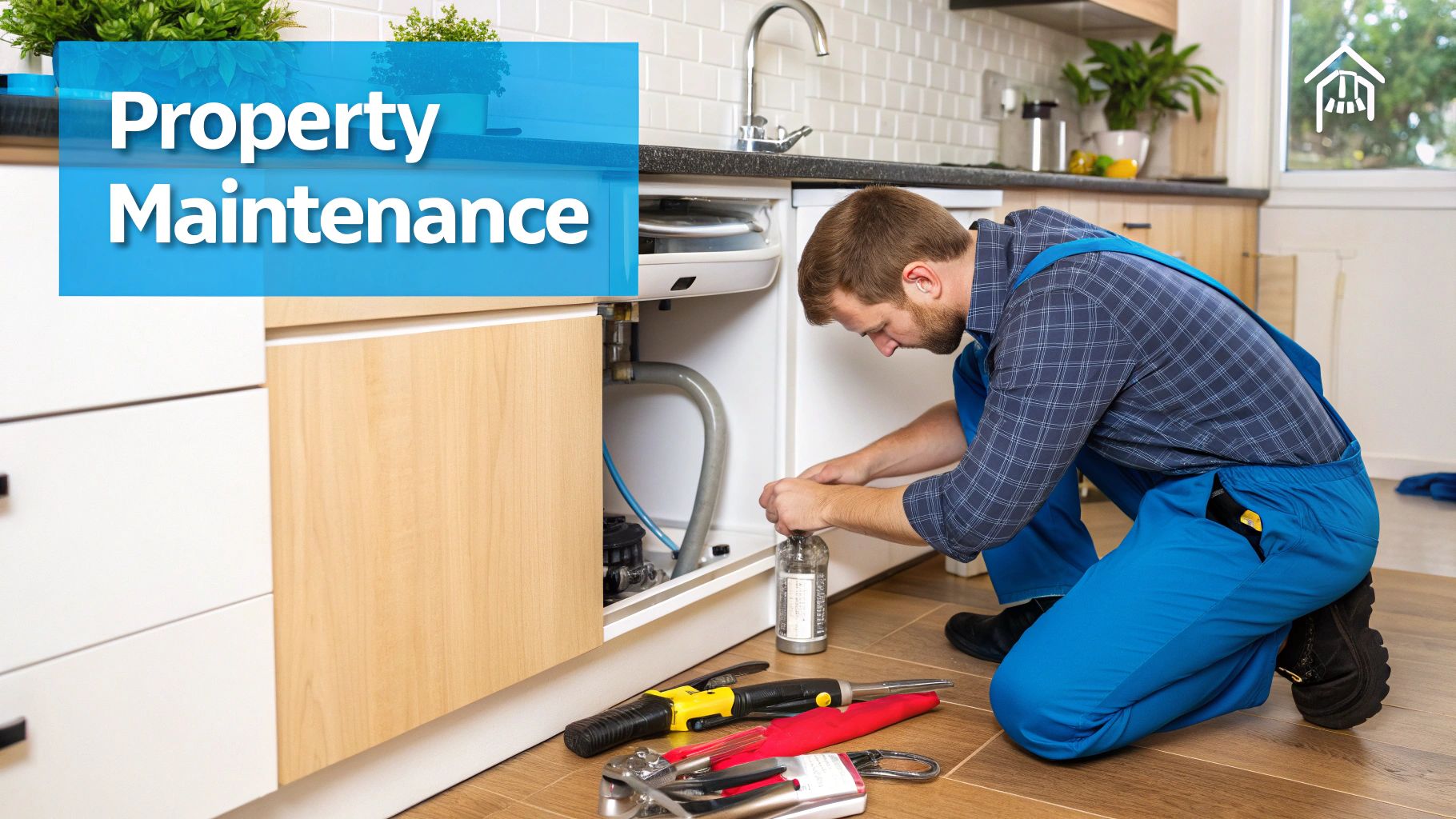
Alright, you’ve optimized your leasing funnel. Rent is being collected efficiently. Now what? Your job isn't over; in fact, this is where savvy operators create real enterprise value. Smart portfolio management is all about boosting your Net Operating Income (NOI), not just collecting rent.
It's about making strategic CapEx choices that grow your assets' value and, in turn, your rental income. Forget the idea that you need to gut every unit to see a return. The most powerful upgrades are often the ones that improve the tenant experience and justify higher rents.
We're seeing a major shift in the market right now. The number of property managers focused on operational efficiency has jumped to 52% in 2024. Why? Because smart operators are focusing on optimizing the assets they already manage. That’s fantastic news for your bottom line and for the quality of your portfolio.
Focus on Upgrades That Deliver ROI
Not all renovations are created equal—some are just money pits. You need to zero in on improvements that let you justify a rent bump and attract higher-quality tenants who reduce turnover costs.
Think about what residents really want in a rental:
- Modern Kitchens and Baths: This is where you get the most bang for your buck, every single time. A programmatic approach is key. Refinishing cabinets, swapping out old hardware, and installing modern light fixtures across all units during turnover can completely change the feel of a property.
- Durable Flooring: Tearing out stained carpet and putting in luxury vinyl plank (LVP) is a game-changer for durability and tenant appeal. It looks fantastic, it’s a breeze for residents to clean, and it's tough as nails. You’ll save a ton on replacement costs across the portfolio.
- Enhanced Curb Appeal: The first impression is the only impression for many renters. A consistent program for exterior paint, modern unit numbers, and clean, low-maintenance landscaping tells a prospective resident you care about the property before they even walk inside.
If you want to keep enhancing your property's value, diving into some budget-friendly renovation tips and high-impact projects can make a huge difference. These strategic tweaks add up, creating a portfolio that’s easier to lease and commands higher rents.
Stop Reacting and Start Preventing
The absolute best way to protect your assets—and your operating budget—is to get ahead of maintenance. Instead of waiting for that panicked "the water heater exploded" call at 2 a.m., you should be spotting small issues before they become catastrophes.
Proactive maintenance is one of the pillars of a healthy ROI. It keeps your long-term repair costs down, your residents happy, and your property’s value up. A few hundred dollars spent on prevention today can save you thousands in emergency repairs down the road.
Implement a simple, system-wide seasonal checklist. Clean gutters in the fall, service HVAC units in the spring, and check for leaks under sinks during every turnover. This approach doesn't just extend the life of your major systems; it proves to your residents that you're a professional operator.
And happy residents? They renew their leases. That means less turnover, fewer vacancy days, and more money for your investors. For more ideas on keeping your properties filled, check out these seven powerful ways to lease quicker and cheaper.
Using Technology to Scale Your Operations
Let's be honest: managing a distributed portfolio the old-school way is a massive drag on efficiency. If you're a large-scale operator, you didn't get into this business to have your team chase down rent checks or spend their days coordinating showings over endless text messages. The good news is, you don't have to.
Modern property technology—PropTech—is built for large firms like yours. These tools provide the operational muscle to automate the most repetitive (and frustrating) parts of the job. Imagine a world where rent is collected automatically, maintenance work orders are dispatched and tracked centrally, and leases are signed securely from a smartphone. This isn't some far-off future; it's the required tech stack for a modern enterprise.
Still, many operators struggle with integration. A recent Buildium report found that 35% of property managers see cost and complexity as hurdles to adopting new tools, even when they know it will make them more efficient. You can dive deeper into these rental market trends to see just how much technology is changing the game.
Finding Affordable, High-Impact Tools
The trick is to build an integrated tech stack that solves your biggest bottlenecks first. Focus on tools that give you a clear and immediate return on investment, measured by metrics like reduced DOM and improved cost per door.
- Online Rent Collection: This is table stakes. Platforms like Zillow Rental Manager or Avail are great for small landlords, but at scale, you need a system integrated with your core PMS that allows residents to set up recurring payments and builds their credit.
- Digital Maintenance Management: Stop managing repairs through a jumble of texts and emails. A centralized work order system lets residents submit a request with photos, creating a clear audit trail. You can track progress from start to finish, ensuring SLA compliance.
- Digital Lease Management: Services like DocuSign or the built-in features in enterprise property management systems let you send, sign, and store leases entirely online. It's faster, more secure, and essential for remote operations.
If you're weighing your options, this visual breaks down the time and cost of a manual approach versus leveraging a fully managed, tech-enabled solution. It really highlights where technology can bridge the operational gap.

As you can see, while full-service management saves a ton of time, it comes at a premium. A tech-assisted, specialized approach offers a compelling middle ground, giving you back operational capacity without destroying your margins.
To really see the difference technology can make, let's look at how it transforms some of the most common—and time-consuming—tasks for a large portfolio.
Manual vs. Automated Property Management Tasks
The contrast is stark. Automation doesn't just save a few minutes here and there; it fundamentally changes how you allocate resources, allowing you to focus on growing your portfolio instead of just maintaining it.
The Game-Changer: On-Demand Showing Automation
Of all the operational duties, leasing vacant units across a distributed portfolio is the most draining on resources. The constant back-and-forth to schedule tours, the drives between properties, and the frustration of no-shows can kill your team's productivity and extend Days on Market (DOM).
This is where automation delivers its biggest punch to your bottom line.
Showing automation isn't about removing the human element. It's about getting rid of the operational friction that costs you time and revenue. It frees your leasing agents from the tyranny of the calendar so they can focus on what actually matters—closing qualified leads and signing leases.
Tools like Showdigs handle the entire showing process for you. Interested renters schedule viewings on-demand through the platform, and a network of local, licensed agents conducts the in-person tours on your behalf.
Suddenly, your leasing team's efficiency skyrockets. Vacancies get filled faster because prospects can see a property the moment they're interested, dramatically reducing DOM. By strategically embracing technology for your most time-intensive tasks, you can run a more profitable, less stressful, and far more scalable property management company.
Navigating Leases and Legal Requirements at Scale
Managing a large rental portfolio is so much more than just optimizing leasing and maintenance. You’re also responsible for building a bulletproof legal and financial framework to protect your clients' investments. This isn't the exciting part, but it's a non-negotiable part of enterprise property management. Getting it right from the start will save you from massive legal and financial risk down the road.
Your lease agreement is the single most important document you have. Period. It’s the legally binding contract that spells out the rights and responsibilities for both you and your residents. A generic, one-page lease you find online is a liability—it needs to be comprehensive, attorney-vetted, and compliant with specific state and local laws for every market you operate in.
This document is where you set clear expectations and protect your company and your clients. Don't leave any room for ambiguity.
Key Components of an Ironclad Lease Template
A strong lease agreement should be ridiculously detailed, covering every foreseeable scenario. Think of it as the official rulebook for the tenancy, standardized across your portfolio.
- Rent and Fees: Clearly state the rent amount, the exact due date, and how you'll accept payment. Define your grace period and specify the late fee that will be charged, ensuring it complies with local regulations.
- Tenant Responsibilities: Outline everything the tenant is responsible for. This could be routine maintenance (like changing air filters), yard care, or utility payments. Be explicit about your rules on pets, smoking, and long-term guests.
- Landlord Responsibilities: Detail your obligations, too. This includes making necessary repairs in a timely manner and giving the legally required notice before entering the property.
- Move-In and Move-Out Procedures: Describe the entire process, from the initial digital walkthrough to the requirements for the final inspection. This is absolutely crucial for fairly handling the security deposit. A detailed condition report is your best friend here. If you're not sure why, you can learn more about the importance of condition reports in protecting your assets.
Understanding Fair Housing Laws
Beyond the lease itself, your entire team must be fluent in the Fair Housing Act. This federal law prohibits discrimination in housing based on race, color, religion, sex, national origin, familial status, or disability.
What does this mean in practice? It means you must treat every single applicant and resident exactly the same. Your screening criteria, rent prices, and rules have to be applied consistently to everyone, without exception. Even unintentional discrimination can land you in serious legal and financial hot water.
Adhering to Fair Housing laws isn't just about avoiding lawsuits—it's about running a professional, ethical business. A consistent, documented process for everything from marketing to maintenance is your best defense.
Streamlined Bookkeeping and Financial Tracking
Finally, keeping your finances in order is essential for running a profitable portfolio and staying on the right side of the IRS. You don’t need an army of CPAs, but you absolutely need an integrated system.
Use a professional property management accounting software to track all income and expenses for each property. When tax season rolls around, you’ll be able to easily generate reports and claim deductions for all legitimate expenses—things like mortgage interest, property taxes, insurance, repairs, and property management fees.
Keeping meticulous, automated records makes tax time infinitely less stressful and ensures you’re maximizing your clients' returns. This is the kind of financial discipline that separates hobbyists from serious enterprise operators.
Common Questions from Large Portfolio Managers
Even when you’ve got your systems dialed in, managing a large portfolio means you're always optimizing. New challenges are part of the game, and navigating them takes a blend of practical knowledge and data-driven strategy. Here are some straightforward answers to the questions that come up most often for enterprise-level operators.
What Is the Biggest Mistake PMCs Make When Scaling?
Hands down, the single most damaging mistake is a failure to standardize processes. It’s tempting to let individual property managers or regions operate with their own methods. You've got pressure to fill units, and you just want to get someone in there. But relying on disparate "gut feelings" or inconsistent workflows is a recipe for disaster at scale.
A lack of standardization leads directly to compliance risks, operational inefficiencies, and the gut-wrenching stress (and cost) of managing a chaotic system. Your documented, repeatable processes are your best defense.
Think of your standardized processes—for everything from lead management and screening to maintenance and accounting—as the foundation of your entire enterprise. Getting it right protects you from massive financial and operational headaches down the road.
How Much Should I Budget for CapEx and Maintenance?
You absolutely need a dedicated reserve fund for each property. This is non-negotiable.
A good rule of thumb is the 1% Rule, which suggests you set aside 1% of a property's value each year for maintenance. So for a $30 million portfolio, you'd aim to budget $300,000 a year.
Another way to look at it is to budget a percentage of Gross Potential Rent (GPR). For newer properties, 5-10% might suffice. But for an older portfolio with aging systems, you should probably be budgeting closer to 20-25% for total maintenance and CapEx. This fund is what keeps a surprise, like a major HVAC failure across multiple units, from destroying your clients' returns.
Is Outsourcing Leasing Operations Worth It for a Large Portfolio?
This really comes down to your operational goals, your cost per door, and your core competencies.
If your team is stretched thin, managing a distributed portfolio, or struggling with high Days on Market (DOM), outsourcing leasing operations to a specialized provider is often well worth the cost. A typical property manager charges 8-12% of rent; a specialized leasing partner can often deliver faster results for a lower effective cost by crushing your vacancy rate.
On the other hand, if you have a dense, localized portfolio and a highly efficient in-house team, keeping it in-house can be a fantastic option. You can learn a lot about building a solid tenant-manager relationship to make the whole experience smoother. However, with modern tools to automate showings, you can create a hybrid model that gives you the best of both worlds—control and efficiency.
How Do I Determine Optimal Rent Prices Across a Portfolio?
Setting the right rent is a delicate balance. Go too high, and you risk long, painful vacancies that cost you way more than the extra rent you hoped for. Go too low, and you're leaving millions on the table across the portfolio.
The key is to take the emotion out of it and look at the data.
- Use a Rent Comp Engine: Leverage tools within your PMS or third-party data providers to analyze real-time rental comps in your specific submarkets.
- Adjust for Amenities: Now, compare your properties honestly. Does a subset of your units have new kitchens, in-unit laundry, or a fenced-in yard? Those features justify a higher price point than the place down the street with a 20-year-old stove. This data should be tracked per-unit.
- Stay Dynamic: At the end of the day, the market sets the price. Use dynamic pricing tools to be objective about where your properties fit in with the competition to find that sweet spot that maximizes revenue and minimizes vacancy loss.
Managing a large rental portfolio effectively comes down to having the right systems and the right partners. Showdigs gives you the power to automate your entire leasing process, from scheduling to showings, so you can slash Days on Market and get your team's time back. Learn how Showdigs can help you run a more efficient, profitable rental business.





